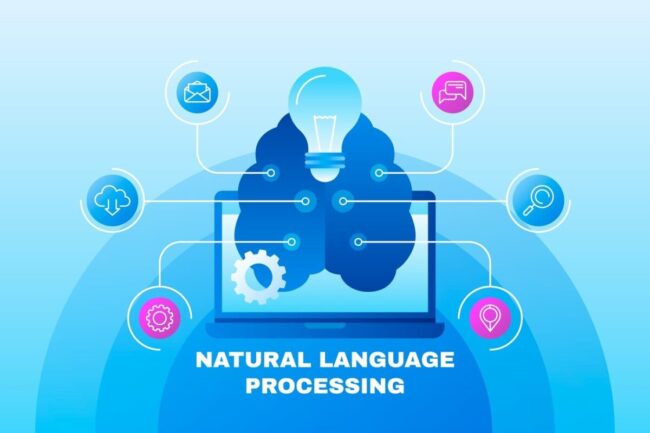Businesses are inundated with data from multiple channels: calls, chats, emails, and social media interactions. Amidst this cacophony lies a gem: conversation analytics. This powerful tool allows organizations to glean actionable insights from the dialogues they engage in with customers, employees, and stakeholders. By harnessing the transformative capabilities of conversation analytics, businesses can revolutionize their operations, enhance customer experiences, and drive innovation.
Understanding Conversation Analytics
Conversation analytics refers to the process of collecting, analyzing, and interpreting verbal and written dialogues to uncover insights about interactions. It employs advanced technologies such as natural language processing (NLP), machine learning, and artificial intelligence (AI) to decipher emotions, sentiments, and key themes within conversations. By converting qualitative data into quantitative insights, companies can better understand customer needs, preferences, and behaviors.
This transformative process begins with the collection of conversation data from various sources. Once gathered, the data undergoes rigorous analysis, identifying patterns, trends, and anomalies. The end goal is to create a comprehensive picture of how conversations impact business outcomes, allowing organizations to make informed decisions backed by data-driven insights.
Leveraging Natural Language Processing (NLP) for Deeper Insights

Conversation analytics heavily relies on technologies like natural language processing (NLP) to extract meaningful insights. NLP allows businesses to understand the context, tone, and intent behind every conversation. Whether it’s discerning subtle emotional cues from a frustrated customer or identifying recurring themes in employee feedback, NLP provides a level of granularity that traditional data analysis tools often overlook.
For instance, customer service teams can use NLP-powered conversation analytics to automatically flag interactions where customers express frustration or dissatisfaction. This real-time insight enables businesses to step in before issues escalate, fostering a more responsive and empathetic customer service approach. By identifying patterns in customer sentiment, organizations can adjust their strategies to better meet customer needs, resulting in improved satisfaction and loyalty.
Enhancing Customer Engagement
One of the most significant advantages of conversation analytics lies in its ability to enhance customer engagement. By analyzing customer interactions, businesses can identify pain points and bottlenecks in the customer journey. Understanding the context and sentiment of conversations enables organizations to tailor their responses and solutions to meet individual needs.
For instance, a company that leverages conversation analytics may discover recurring issues faced by customers during support calls. By addressing these pain points proactively—through improved training for customer service representatives or by optimizing self-service options—businesses can create a smoother, more satisfying customer experience. This not only increases customer loyalty but also fosters positive word-of-mouth, ultimately driving revenue growth.
Driving Operational Efficiency
Beyond improving customer experience, conversation analytics can significantly boost operational efficiency within organizations. By analyzing internal conversations, businesses can identify inefficiencies in communication, workflow, and team collaboration. This insight enables leaders to streamline processes, eliminate redundancies, and enhance teamwork.
For example, a company might analyze meeting transcripts to determine whether discussions are productive or veering off-course. If analytics reveal a pattern of unproductive meetings, leaders can implement strategies to refocus discussions, set clear agendas, and ensure that actionable steps are highlighted. The result is a more agile organization capable of responding swiftly to market changes and internal challenges.
Informing Product Development

Product development is another area where conversation analytics proves invaluable. By analyzing customer feedback and interactions, businesses can gain deep insights into what their customers truly want and need. This data-driven approach can guide the entire product development lifecycle, from ideation to launch.
For instance, a tech company may analyze support tickets, customer reviews, and social media conversations to identify desired features or common pain points with their products. By integrating these insights into their development process, companies can create offerings that resonate more profoundly with their target audience, leading to higher adoption rates and customer satisfaction. The iterative nature of this feedback loop ensures that products continually evolve in line with customer expectations.
Fostering Employee Engagement and Retention
Conversation analytics is not limited to external interactions; it can also play a pivotal role in enhancing employee engagement and retention. By analyzing internal communications, companies can gain insights into employee sentiment, satisfaction, and engagement levels. Identifying potential red flags or areas of concern allows organizations to take proactive measures to foster a positive workplace culture.
For example, if analytics reveal a consistent theme of dissatisfaction among employees related to workload or management practices, leadership can implement strategies to improve team dynamics, provide additional resources, or offer training programs. By actively listening to employees through the lens of conversation analytics, organizations can cultivate a motivated workforce that is more likely to stay engaged and committed.
Measuring Success and ROI
As businesses invest in conversation analytics, measuring success and return on investment (ROI) becomes crucial. By establishing key performance indicators (KPIs), organizations can assess the impact of their analytics initiatives on both customer and employee engagement.
For instance, tracking metrics such as customer satisfaction scores, net promoter scores, or employee retention rates can provide tangible evidence of the benefits derived from conversation analytics. Furthermore, businesses can conduct A/B testing to evaluate the effectiveness of changes implemented based on insights gleaned from analytics. This iterative approach allows organizations to refine their strategies continuously, maximizing the value derived from their investments.
The Future of Conversation Analytics in Busines
As technology continues to evolve, so too will the capabilities of conversation analytics. The integration of AI and machine learning will lead to even more sophisticated analysis, enabling organizations to glean insights in real-time. This immediacy will allow businesses to respond dynamically to customer needs and market fluctuations, making them more agile and competitive.
Moreover, as remote work and digital communication become increasingly prevalent, the need for robust conversation analytics tools will only grow. Companies that embrace these technologies will be better positioned to navigate the complexities of the modern business landscape, fostering deeper connections with customers and employees alike.
Conversation analytics stands as a transformative force in contemporary business. By unlocking insights from conversations, organizations can enhance customer engagement, drive operational efficiency, inform product development, and foster employee satisfaction. As the landscape continues to evolve, those who harness the power of conversation analytics will undoubtedly lead the way in innovation and success.
